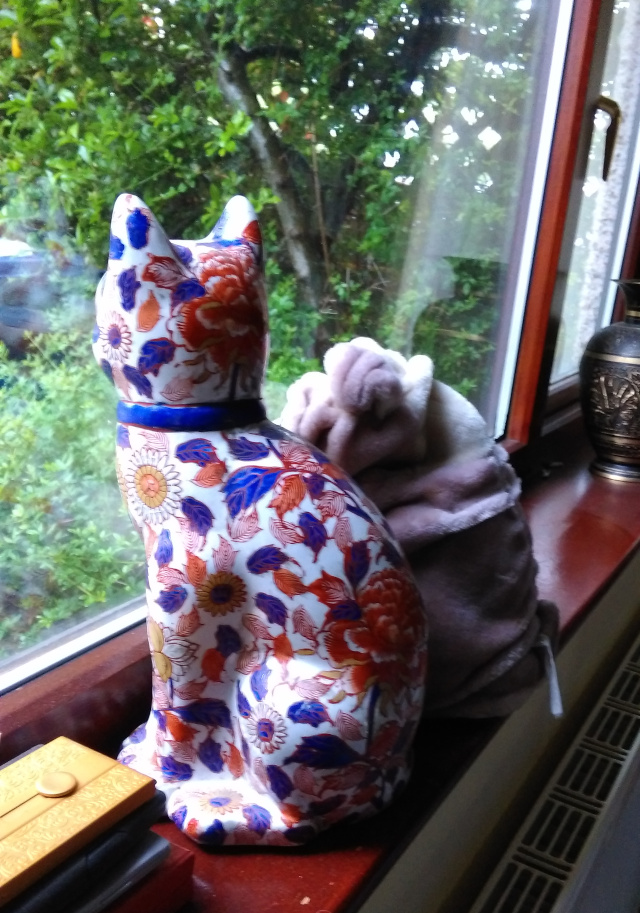It’s about a year since the Coronavirus epidemic began in the UK (March 2020) and there have been two periods in lock-down (stay at home order). During this period, I’ve had a regular practice of Qi Gong (Qigong) – the 18 movement form – and this is what I’ve found in it.
I learned Qi Gong (18 movement) by watching it on You Tube – particularly Master Wing Cheung’s demonstration of it – many times! Staying at home, I couldn’t attend a class! I researched the elements of the form and wrote the sequence on flip-chart paper. By repeating the sequence, I learnt it and explored the practice.
What did I find?
I’ve documented the sequence of 18 movements below. By referring to it and the film of me praticing (above) then you can follow it through, from the first movement ‘Lifting Water’ to the last one ‘Pressing the Hands’. After the sequence, there is a standing meditation involving the imaginary manipulation of ‘energy’ in the hands, and coming to stillness.
- Where does the movement start? Initially, I thought it started in the wrist – since we’re not pointing with our fingers which is where we instinctively start movement. Often the hands seem flaccid. But as I practiced then I thought the movement started in our centre – just below the belly button as in contact improvisation. But finally, I realised that it started with the breath! This is evident in the inhalation – upward movement (rising) of the standing figure, and exhalation – the downward movement (falling) of the figure. When there is no vertical movement – such as in the ‘Pushing the Palms’ and the ‘Punching’ movements then the exhale – out-breath – starts the outward movement.
- It’s a standing practice! This seems obvious but it’s worth stating. However, that doesn’t mean we aren’t moving our weight on our feet – shifting from the heel to the ball of the foot, or sometimes pressing our feet into the ground to anchor it. This is particularly apparent when ‘Pushing the Waves’ where we are literally rocking back and forth as the waves (hands) go out and in. But equally, when ‘Spinning the Wheel’ – as we rotate our upper body then weight is transferred from one foot to the other as we move our body in a circular motion. Indeed, pushing into the ground with the foot both helps to propel the movement and stabilise the body.
- Don’t twist at the knees! It’s the combination of shifting our weight from one foot to the other and turning at the waist while stationary which gives the freedom of movement. If you feel yourself twisting at the knee then instead push your foot into the ground (move your weight to the ball of the foot). Say you are turning your body to the left then your left foot is anchored in the ground allowing your other foot to lift and turn as needed. Twist at the waist not the knees! Your arms are following your torso which is following your waist/centre/belly button! This will potentially avoid straining and damaging your knee!
- Hands follow The hands don’t lead and they seem flaccid but by keeping some extension in your forefinger then this helps to emphasis the movement – it’s almost a pointing but not quite, and there is flexibility in the wrist allowing freedom of movement in it. Imagine that you are using your belly button to point – let that move your upper body and your arms/hands too.
- Extension by turning The ‘Punching’ and ‘Turning the Waist While Pushing the Palms’ movements extend the reach by turning at the waist which pushes out the arm and hand. It’s not the arm punching or reaching but the turning of the waist which moves the open palm or clenched fist, forward and outward!
- Moving a space In the ‘Separating the Clouds’ movement then one way of thinking about it, is to consider that the arms stay a fixed distance from each other as they are moved side to side, and it is not so much that they move together at the same time. In effect, you are holding a space and shifting it side to side, back and forth.
- Balance Your balance moves on your feet – back and forth – ball of the foot to heel, etc, as well as side to side – from left foot to right, etc. Maintain a posture as if your head is pulled up on a sting and your spine is straight. Keep your head pointing forward – and allow it to move with your torso – rather than independently. However, in the ‘March the Bounding Ball’ movement then while pushing up on a foot – giving a little jump, you don’t move directly up! Instead, when moving upward, you must aim slightly to the side with your head when jumping up (opposite to the foot with which your jumping) – this helps to keep your weight equally distributed and avoids jumping from one side to another. It’s a subtle adjustment which becomes evident when you look in a mirror or film yourself!
The 18 Movement Sequence

- Lifting Water
- Opening the Chest
- Dancing with Rainbows
- Separating the Clouds
- Rolling the Arms
- Rowing the Boat
- Lifting a Ball
- Turning to Look at the Moon
- Pushing Palms while Turning the Waist
- Waving Hands like Clouds
- Scoping the Sea and Looking to the Sky
- Pushing the Waves
- Flying Dove Spreads Wings
- Punching
- Flying Wild Geese
- Spinning the Wheel
- March the Bouncing Ball
- Pressing the Palms

